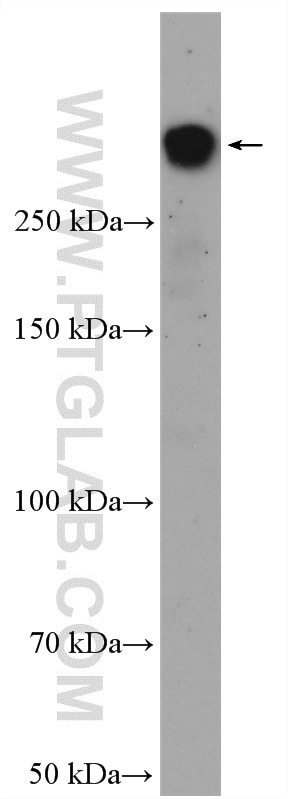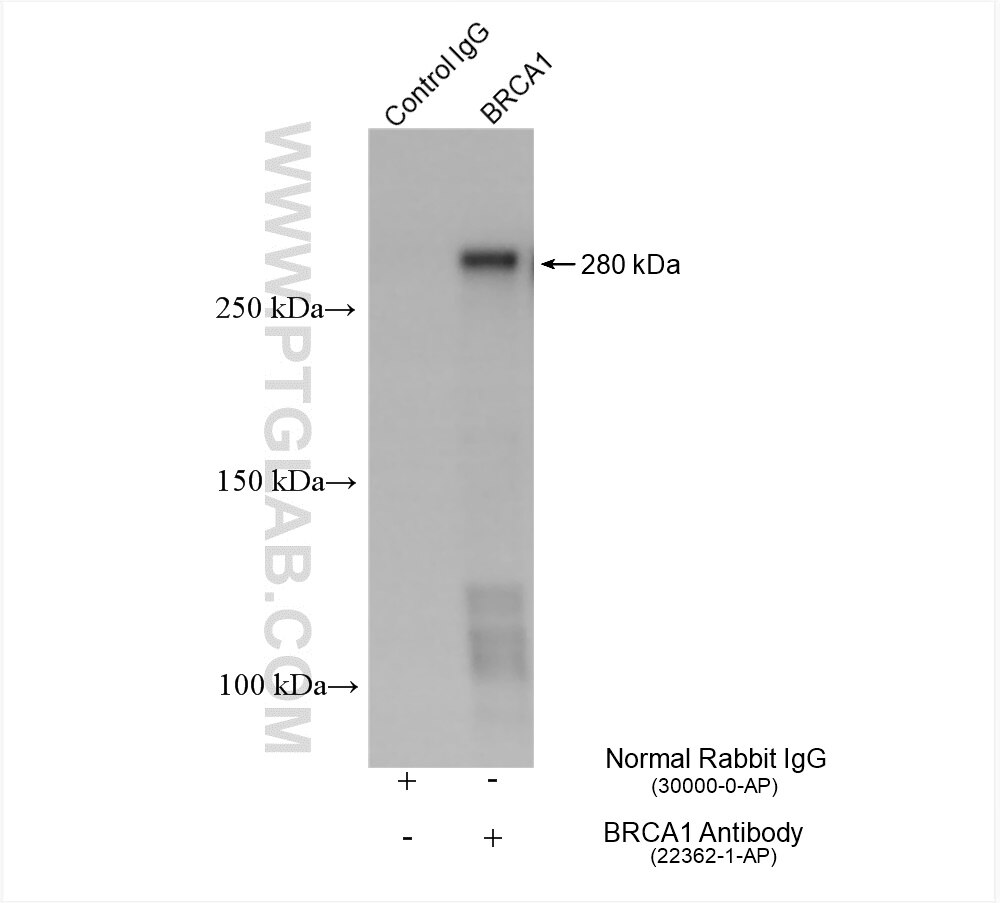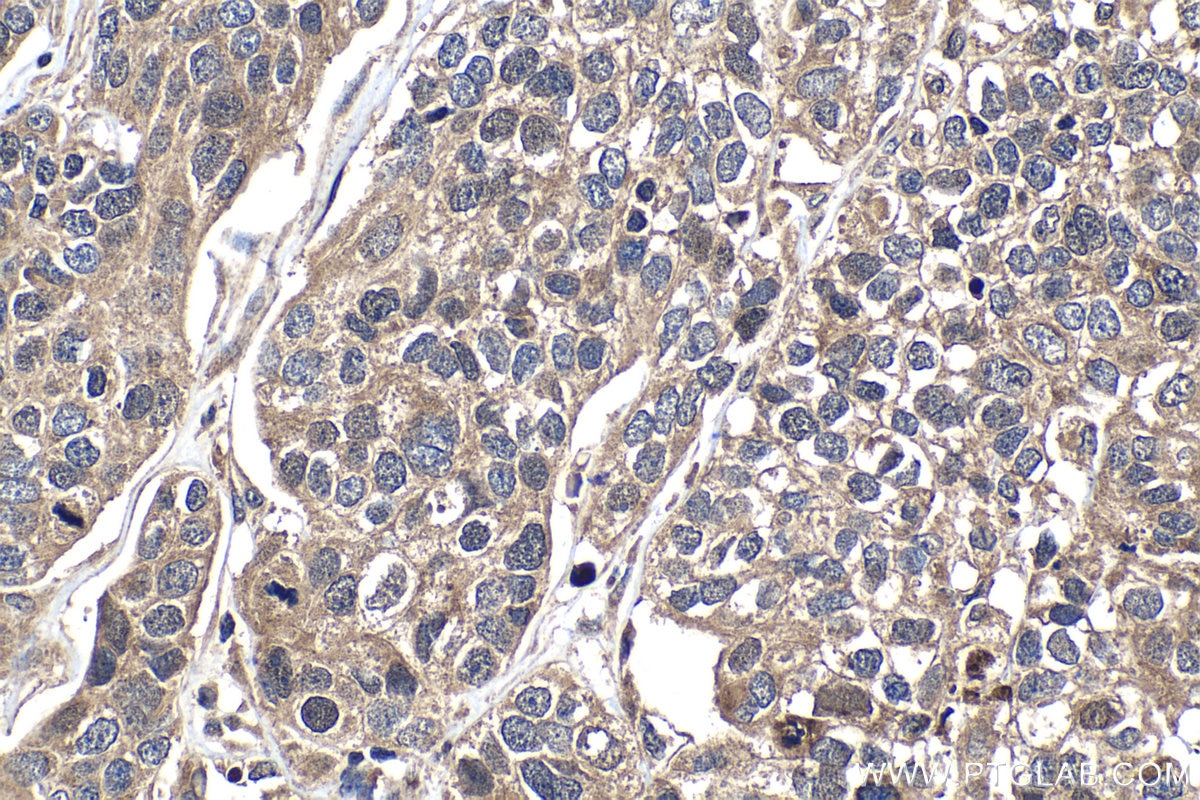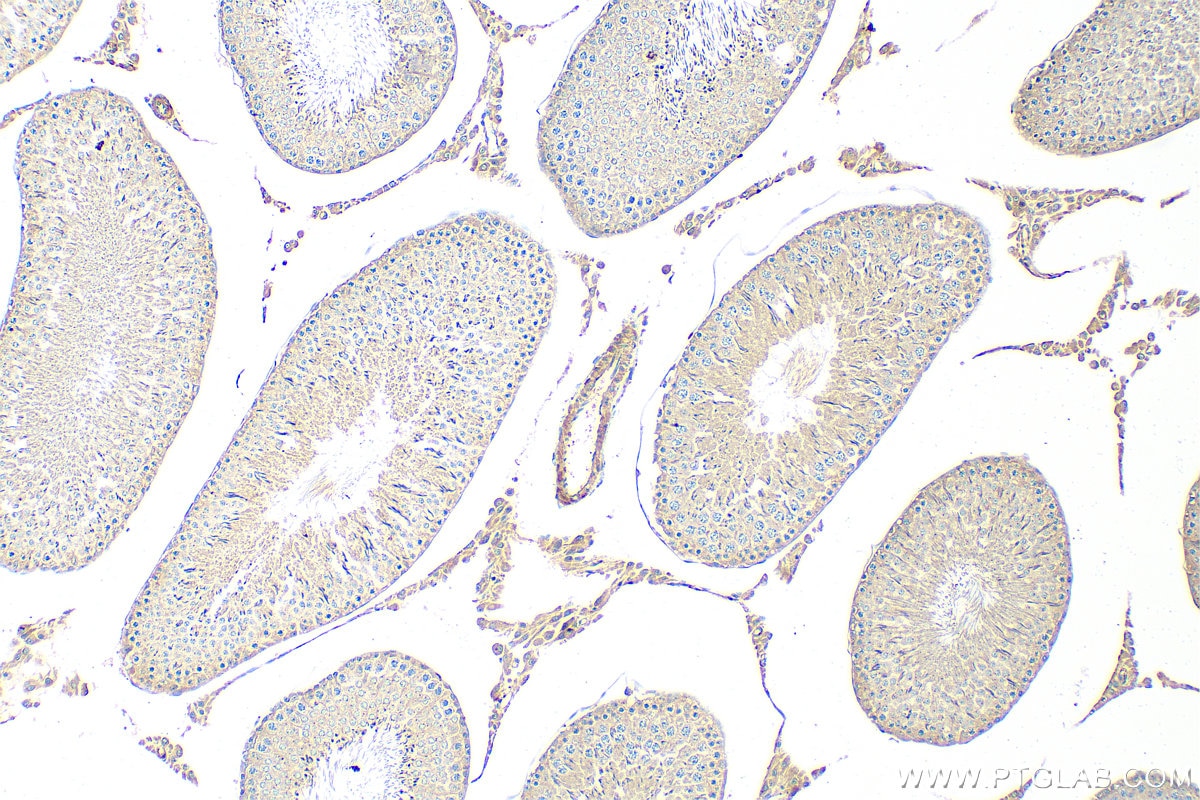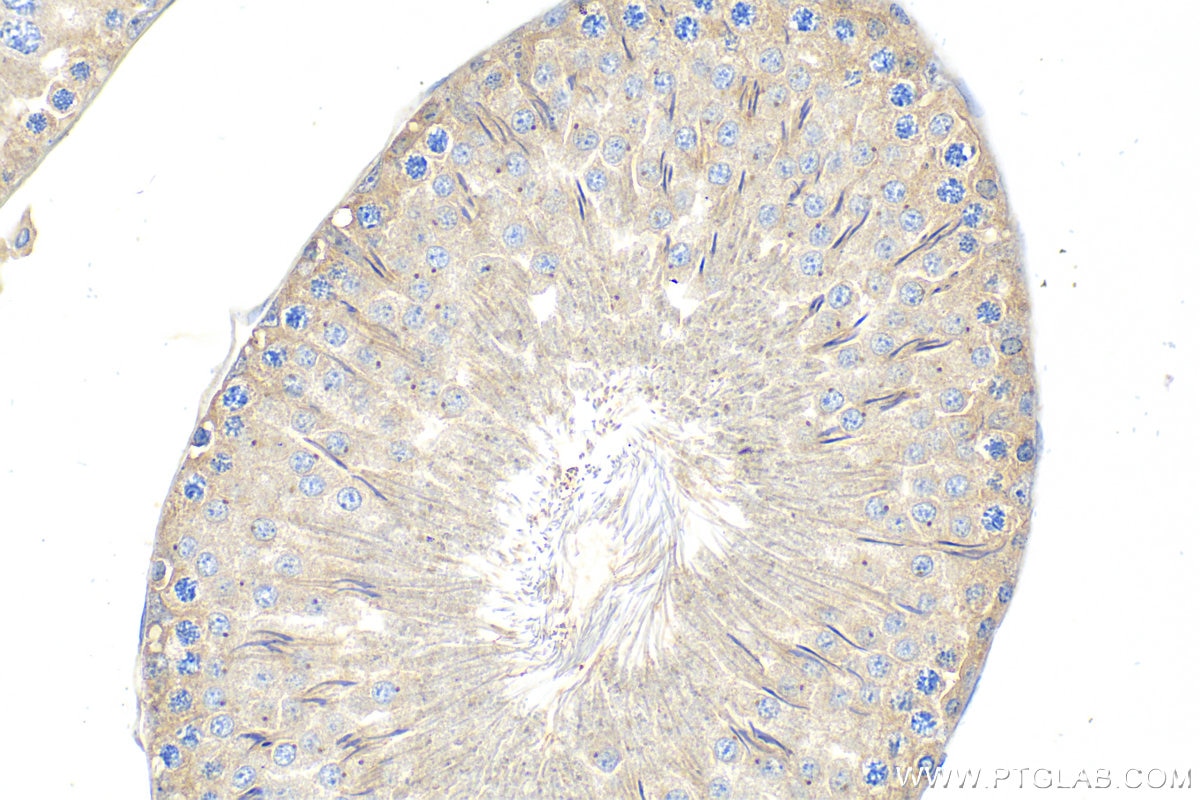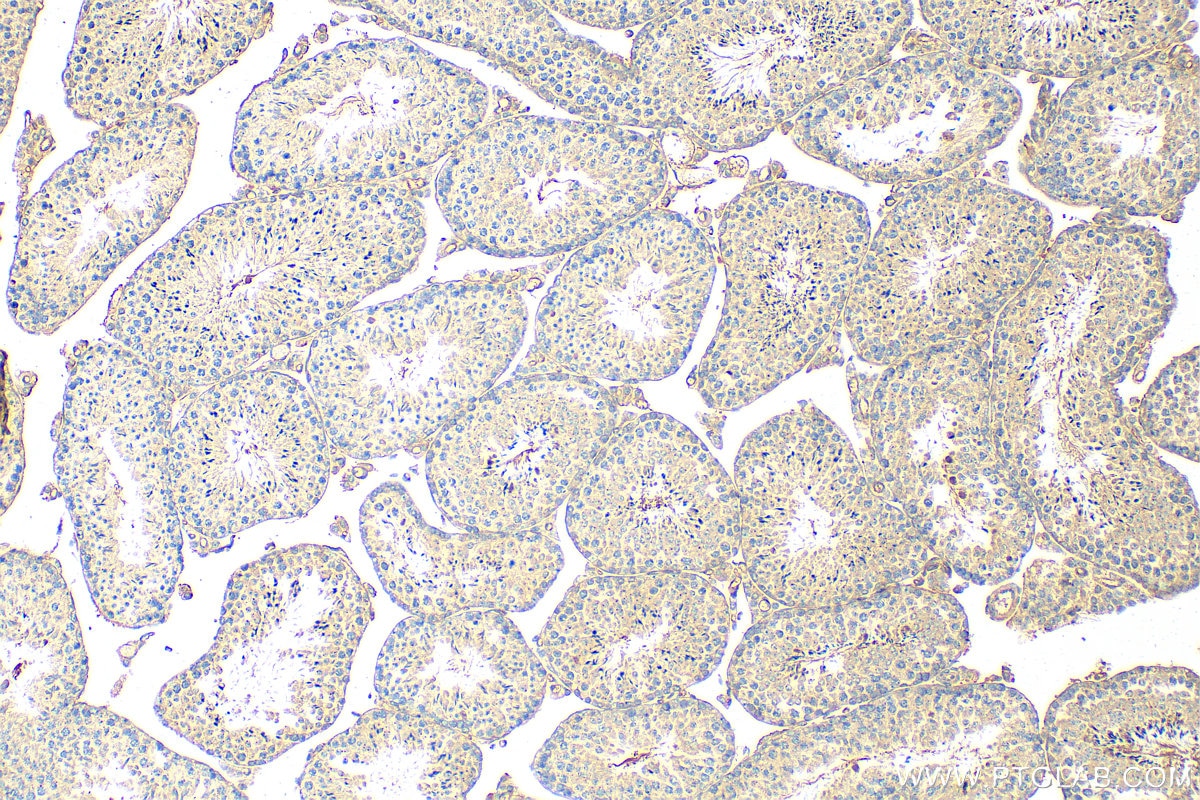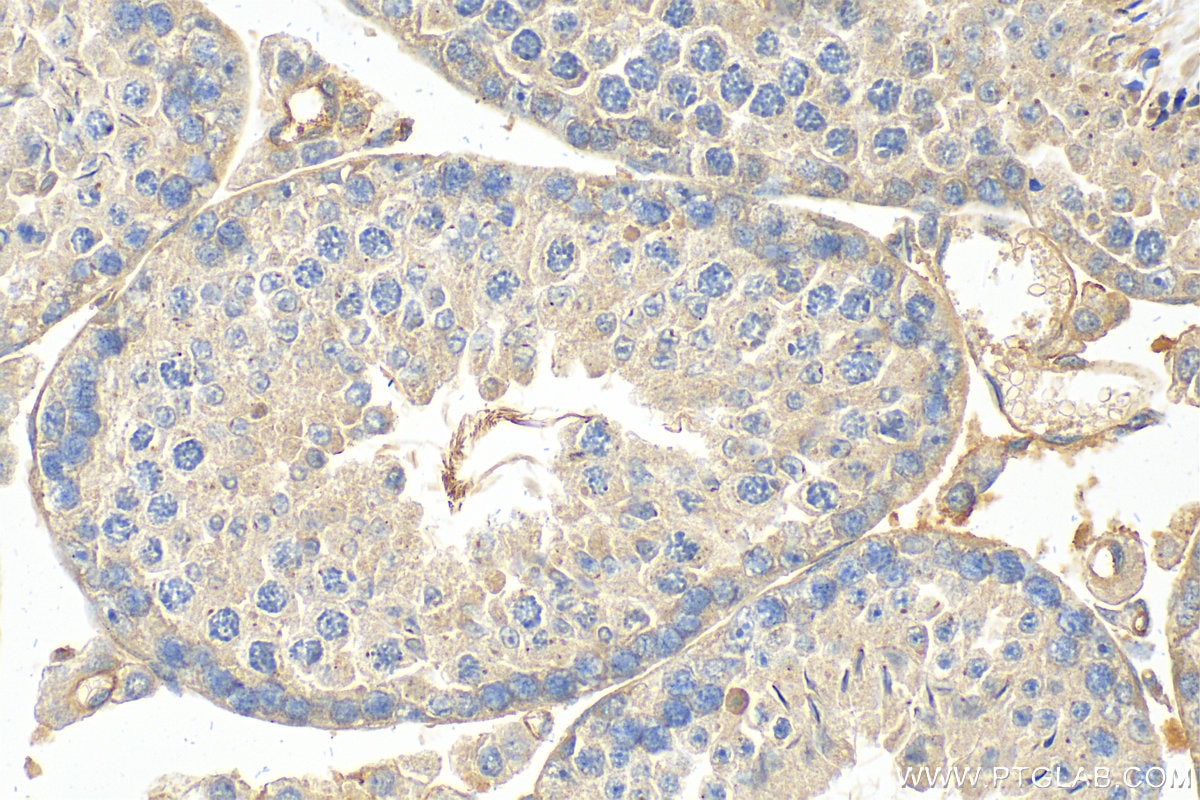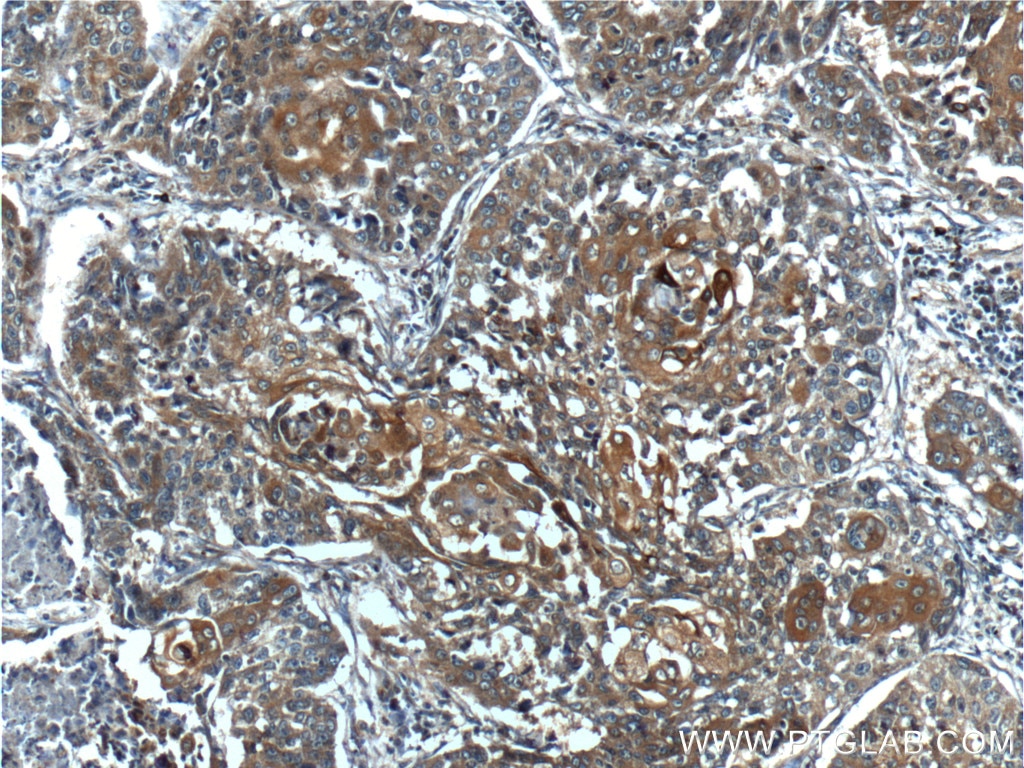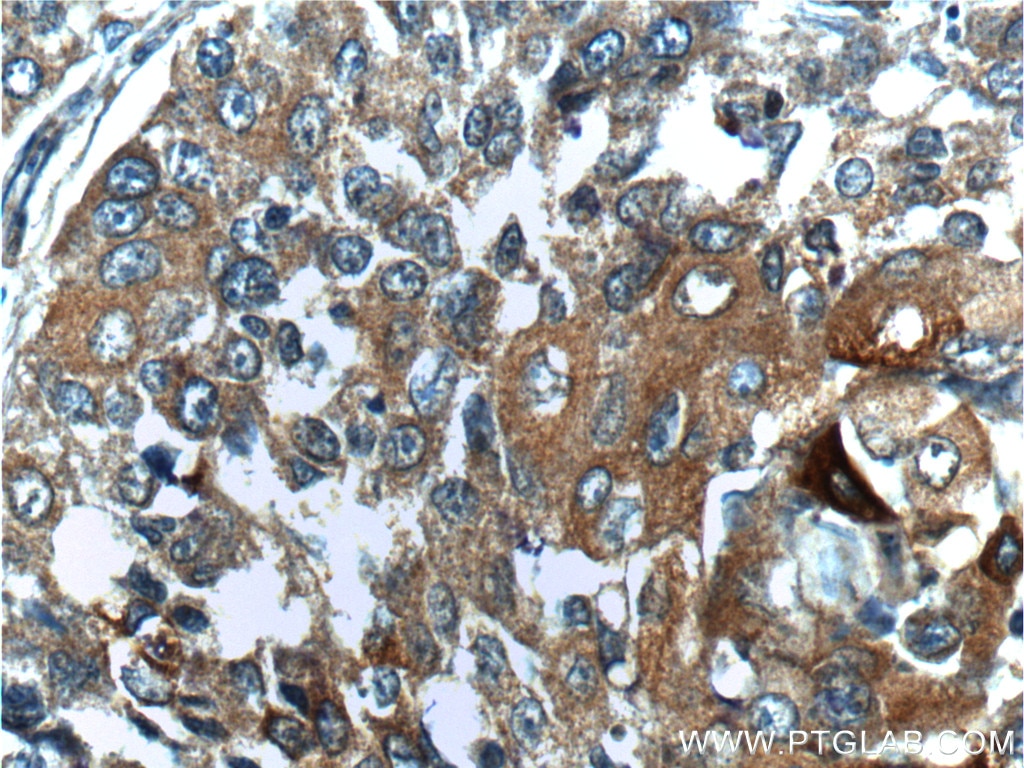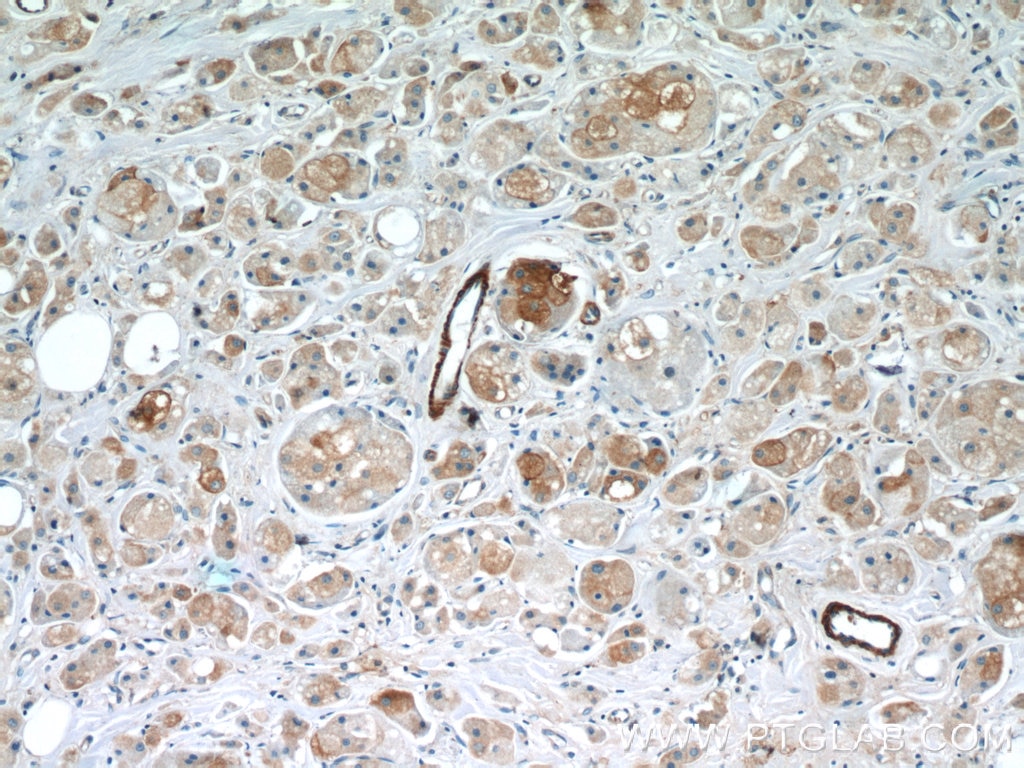- Phare
- Validé par KD/KO
Anticorps Polyclonal de lapin anti-BRCA1
BRCA1 Polyclonal Antibody for WB, IP, IHC, ELISA
Hôte / Isotype
Lapin / IgG
Réactivité testée
Humain, rat, souris
Applications
WB, IP, IF, IHC, ChIP, ELISA
Conjugaison
Non conjugué
N° de cat : 22362-1-AP
Synonymes
Galerie de données de validation
Applications testées
| Résultats positifs en WB | cellules MCF-7, |
| Résultats positifs en IP | cellules MCF-7, |
| Résultats positifs en IHC | tissu de tumeur ovarienne humain, tissu de cancer du poumon humain, tissu de cancer du sein humain, tissu testiculaire de rat, tissu testiculaire de souris il est suggéré de démasquer l'antigène avec un tampon de TE buffer pH 9.0; (*) À défaut, 'le démasquage de l'antigène peut être 'effectué avec un tampon citrate pH 6,0. |
Dilution recommandée
| Application | Dilution |
|---|---|
| Western Blot (WB) | WB : 1:1000-1:4000 |
| Immunoprécipitation (IP) | IP : 0.5-4.0 ug for 1.0-3.0 mg of total protein lysate |
| Immunohistochimie (IHC) | IHC : 1:500-1:2000 |
| It is recommended that this reagent should be titrated in each testing system to obtain optimal results. | |
| Sample-dependent, check data in validation data gallery | |
Applications publiées
| KD/KO | See 4 publications below |
| WB | See 30 publications below |
| IHC | See 8 publications below |
| IF | See 5 publications below |
| IP | See 1 publications below |
| ChIP | See 2 publications below |
Informations sur le produit
22362-1-AP cible BRCA1 dans les applications de WB, IP, IF, IHC, ChIP, ELISA et montre une réactivité avec des échantillons Humain, rat, souris
| Réactivité | Humain, rat, souris |
| Réactivité citée | Humain, souris |
| Hôte / Isotype | Lapin / IgG |
| Clonalité | Polyclonal |
| Type | Anticorps |
| Immunogène | BRCA1 Protéine recombinante Ag17946 |
| Nom complet | breast cancer 1, early onset |
| Masse moléculaire calculée | 1863 aa, 208 kDa |
| Poids moléculaire observé | 300 kDa |
| Numéro d’acquisition GenBank | BC115037 |
| Symbole du gène | BRCA1 |
| Identification du gène (NCBI) | 672 |
| Conjugaison | Non conjugué |
| Forme | Liquide |
| Méthode de purification | Purification par affinité contre l'antigène |
| Tampon de stockage | PBS avec azoture de sodium à 0,02 % et glycérol à 50 % pH 7,3 |
| Conditions de stockage | Stocker à -20°C. Stable pendant un an après l'expédition. L'aliquotage n'est pas nécessaire pour le stockage à -20oC Les 20ul contiennent 0,1% de BSA. |
Informations générales
BRCA1, also named as RNF53, plays a central role in DNA repair by facilitating cellular response to DNA repair. It is required for appropriate cell cycle arrests after ionizing irradiation in both the S-phase and the G2 phase of the cell cycle. The BRCA1-BARD1 heterodimer coordinates a diverse range of cellular pathways such as DNA damage repair, ubiquitination and transcriptional regulation to maintain genomic stability. BRCA1 acts by mediating ubiquitin E3 ligase activity that is required for its tumor suppressor function. It is involved in transcriptional regulation of P21 in response to DNA damage. BRCA1 is required for FANCD2 targeting to sites of DNA damage. It may function as a transcriptional regulator. BRCA1 inhibits lipid synthesis by binding to inactive phosphorylated ACACA and preventing its dephosphorylation. The antibody is specific to BRCA1. BRCA1 appears to produce multiple splice variants. BRCA1 is a nuclear protein with a molecular mass of 220 kDa. The present study describes the isolation and expression of two cDNAs of BRCA1, including a splice variant designated BRCA1D672-4095. BRCA1D672-4095 is generated by exclusion of exon 11 by in-frame splicing and produces a 97 kDa protein. In contrast to BRCA1, BRCA1D672-4095 localizes to the cytoplasm.
Protocole
| Product Specific Protocols | |
|---|---|
| WB protocol for BRCA1 antibody 22362-1-AP | Download protocol |
| IHC protocol for BRCA1 antibody 22362-1-AP | Download protocol |
| IP protocol for BRCA1 antibody 22362-1-AP | Download protocol |
| Standard Protocols | |
|---|---|
| Click here to view our Standard Protocols |
Publications
| Species | Application | Title |
|---|---|---|
Mol Cell A di-acetyl-decorated chromatin signature couples liquid condensation to suppress DNA end synapsis | ||
Mol Cell A PARylation-phosphorylation cascade promotes TOPBP1 loading and RPA-RAD51 exchange in homologous recombination.
| ||
Nat Commun SIRT7 is a histone desuccinylase that functionally links to chromatin compaction and genome stability.
| ||
Nucleic Acids Res USP11 acts as a histone deubiquitinase functioning in chromatin reorganization during DNA repair. | ||
EMBO Rep FANCJ DNA helicase is recruited to the replisome by AND-1 to ensure genome stability | ||
Oxid Med Cell Longev Slowly Repaired Bulky DNA Damages Modulate Cellular Redox Environment Leading to Premature Senescence. |
Avis
The reviews below have been submitted by verified Proteintech customers who received an incentive forproviding their feedback.
FH Hasan (Verified Customer) (08-08-2022) | Western blot for HeLa cells transfected with siRNA against BRCA1 or control. anti-BRCA1 Ab (22362-1-AP) was used at dilution of (1:2000) in 5% skimmed milk. incubation overnight at 4 degrees.
 |
